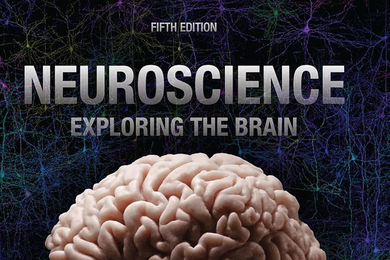Given the volatility of financial markets and the difficulty of earning steady returns over the last several years, it would seem valuable for today's investors in, say, stock-based mutual funds to equip themselves with more data about the results of different funds. Yet increasing knowledge among investors can actually lead to unintended negative consequences, according to new research.
In a new working paper, Gustavo Manso, an associate professor at the MIT Sloan School of Management, and co-author Bruce Carlin, an assistant professor of finance at UCLA, conclude that modest increases in know-how for some investors damage other customers by generating an “arms race” in which financial firms seek new profits by baffling all clients with ever-more arcane products.
“Small increments of education can hurt everyone,” says Manso. This hardly means we should not pursue investor literacy, he says, but it does suggest that we consider the effects that different types of financial education can have.
Obfuscation versus education
In the paper, “Obfuscation, Learning, and the Evolution of Investor Sophistication,” to be published in the Review of Financial Studies, Manso and Carlin examine consumer financial education involving the mutual-fund industry, although they say their research also applies to the credit card and mortgage businesses, and more. Investors often ignore costly mutual-fund fees, the authors point out; similarly, many homeowners have failed to understand how adjustable-rate mortgages work, while consumers who do not grasp the fees and repayment schedules of credit cards have helped lead “to a record-setting amount of household debt” in the United States.
With mutual funds, investors who focus exclusively on fund performance — annual returns — overlook the annual fees that can overshadow variations in fund results. “There are huge differences in mutual-fund fees,” says Manso. “They add up pretty quickly. But it’s hard for investors to figure them out, because they’re sometimes hidden in the fund’s prospectus.” A 1998 study by the economists Dale Domain and William Reichenstein found that fees account for 84 percent of the difference in performance among a group of major funds.
In theory, this problem can be remedied in a variety of ways. The government could require financial firms to make more transparent disclosures. Investors can educate themselves about the subject, or learn from each other. Some economists have argued that financial literacy should be a basic part of a secondary-school education.
Making financial literacy a part of schooling, however, would be costly and hard to implement nationally (at least in the United States, where schools have significant local controls). At the moment, gains in knowledge among investors are more likely to be incremental and limited to a portion of the investing population.
“If you educate everyone, and everyone becomes sophisticated, you’d solve the problem,” says Manso. “Firms wouldn’t have incentives to play games any more. But that would be very expensive and hard to do.”
Instead, Manso and Carlin assert, the uneven levels of financial knowledge among the public produce a dynamic relationship between financial firms and their customers. Firms frequently alter their offerings to increase profitability. “Some consumers are sophisticated, so they’re able to see through different offerings and pick out the best products, says Manso. “But in practice, there are a lot of unsophisticated investors, and they are the ones who are losing frequently. Even when they catch up a bit, there is still a lot of scope for firms to dynamically adjust their products.”
Using past empirical studies, Manso and Carlin model a variety of situations in which investors increase their education levels, and firms respond. Some of these “arms-race” scenarios bring unwanted costs to all parties. Unsophisticated investors pay higher fees. Sophisticated investors invest more time and money finding better funds. The funds themselves spend increasing amounts of capital changing their products. And markets with highly complex products can scare off potential investors. “This not only degrades personal welfare,” the authors write, “but also effects the economy as a whole.”
What is to be done?
If a little financial education is a dangerous thing, then what other options do we have to help the public avoid pitfalls when it comes to choosing sound investments? Manso suggests there are a couple of alternatives, with their own benefits and costs.
One solution would be increased regulation to prevent obfuscation by financial firms, thus limiting the opportunities businesses have to exploit consumers. Indeed, the financial regulation bill being considered by Congress would likely increase the government’s ability to enact new rules, since it mandates the creation of a Consumer Financial Protection Agency, overseen by the Federal Reserve. Consumer advocates have hailed this part of the legislation.
“We are going to see a fundamental change going forward,” says Gail Hillebrand, a senior attorney and manager of the Consumer Union’s Financial Services Campaign. “For the first time, we will have an agency whose job it is to stay on top of these developments.” In her view, “Financial literacy is a partial solution. We need to pair it with effective oversight.”
However, as Manso notes, new laws might not anticipate innovations of the future. Moreover, despite all the dubious financial practices of recent years, tight regulations “could restrict legitimate innovation,” he says.
Another option, Manso notes, would be widespread use of “libertarian paternalism,” that is, benign guidance for investors. Employees often work for firms whose 401(k) plans have several options. But the government could require firms to assign safe plans to employees as their default selection; workers would have to make a special effort to choose riskier retirement plans. This would eliminate the Enron-style problem in which employees tie up their retirement assets almost wholly in company stock. But the downside, Manso believes, is that libertarian paternalism reduces investor knowledge generally, since it minimizes the need for investors to understand their own finances.
“The cost here is that it kills social learning,” says Manso. “People herd to a default option and they don’t do research any more.”
This diminished incentive to learn may be the least of the various problems in the realm of investor education; it is something Manso and Carlin are continuing to research (in collaboration with another economist, Simon Gervais of Duke). Among investors, perhaps apathy is the cure for ignorance.
In a new working paper, Gustavo Manso, an associate professor at the MIT Sloan School of Management, and co-author Bruce Carlin, an assistant professor of finance at UCLA, conclude that modest increases in know-how for some investors damage other customers by generating an “arms race” in which financial firms seek new profits by baffling all clients with ever-more arcane products.
“Small increments of education can hurt everyone,” says Manso. This hardly means we should not pursue investor literacy, he says, but it does suggest that we consider the effects that different types of financial education can have.
Obfuscation versus education
In the paper, “Obfuscation, Learning, and the Evolution of Investor Sophistication,” to be published in the Review of Financial Studies, Manso and Carlin examine consumer financial education involving the mutual-fund industry, although they say their research also applies to the credit card and mortgage businesses, and more. Investors often ignore costly mutual-fund fees, the authors point out; similarly, many homeowners have failed to understand how adjustable-rate mortgages work, while consumers who do not grasp the fees and repayment schedules of credit cards have helped lead “to a record-setting amount of household debt” in the United States.
With mutual funds, investors who focus exclusively on fund performance — annual returns — overlook the annual fees that can overshadow variations in fund results. “There are huge differences in mutual-fund fees,” says Manso. “They add up pretty quickly. But it’s hard for investors to figure them out, because they’re sometimes hidden in the fund’s prospectus.” A 1998 study by the economists Dale Domain and William Reichenstein found that fees account for 84 percent of the difference in performance among a group of major funds.
In theory, this problem can be remedied in a variety of ways. The government could require financial firms to make more transparent disclosures. Investors can educate themselves about the subject, or learn from each other. Some economists have argued that financial literacy should be a basic part of a secondary-school education.
Making financial literacy a part of schooling, however, would be costly and hard to implement nationally (at least in the United States, where schools have significant local controls). At the moment, gains in knowledge among investors are more likely to be incremental and limited to a portion of the investing population.
“If you educate everyone, and everyone becomes sophisticated, you’d solve the problem,” says Manso. “Firms wouldn’t have incentives to play games any more. But that would be very expensive and hard to do.”
Instead, Manso and Carlin assert, the uneven levels of financial knowledge among the public produce a dynamic relationship between financial firms and their customers. Firms frequently alter their offerings to increase profitability. “Some consumers are sophisticated, so they’re able to see through different offerings and pick out the best products, says Manso. “But in practice, there are a lot of unsophisticated investors, and they are the ones who are losing frequently. Even when they catch up a bit, there is still a lot of scope for firms to dynamically adjust their products.”
Using past empirical studies, Manso and Carlin model a variety of situations in which investors increase their education levels, and firms respond. Some of these “arms-race” scenarios bring unwanted costs to all parties. Unsophisticated investors pay higher fees. Sophisticated investors invest more time and money finding better funds. The funds themselves spend increasing amounts of capital changing their products. And markets with highly complex products can scare off potential investors. “This not only degrades personal welfare,” the authors write, “but also effects the economy as a whole.”
What is to be done?
If a little financial education is a dangerous thing, then what other options do we have to help the public avoid pitfalls when it comes to choosing sound investments? Manso suggests there are a couple of alternatives, with their own benefits and costs.
One solution would be increased regulation to prevent obfuscation by financial firms, thus limiting the opportunities businesses have to exploit consumers. Indeed, the financial regulation bill being considered by Congress would likely increase the government’s ability to enact new rules, since it mandates the creation of a Consumer Financial Protection Agency, overseen by the Federal Reserve. Consumer advocates have hailed this part of the legislation.
“We are going to see a fundamental change going forward,” says Gail Hillebrand, a senior attorney and manager of the Consumer Union’s Financial Services Campaign. “For the first time, we will have an agency whose job it is to stay on top of these developments.” In her view, “Financial literacy is a partial solution. We need to pair it with effective oversight.”
However, as Manso notes, new laws might not anticipate innovations of the future. Moreover, despite all the dubious financial practices of recent years, tight regulations “could restrict legitimate innovation,” he says.
Another option, Manso notes, would be widespread use of “libertarian paternalism,” that is, benign guidance for investors. Employees often work for firms whose 401(k) plans have several options. But the government could require firms to assign safe plans to employees as their default selection; workers would have to make a special effort to choose riskier retirement plans. This would eliminate the Enron-style problem in which employees tie up their retirement assets almost wholly in company stock. But the downside, Manso believes, is that libertarian paternalism reduces investor knowledge generally, since it minimizes the need for investors to understand their own finances.
“The cost here is that it kills social learning,” says Manso. “People herd to a default option and they don’t do research any more.”
This diminished incentive to learn may be the least of the various problems in the realm of investor education; it is something Manso and Carlin are continuing to research (in collaboration with another economist, Simon Gervais of Duke). Among investors, perhaps apathy is the cure for ignorance.






